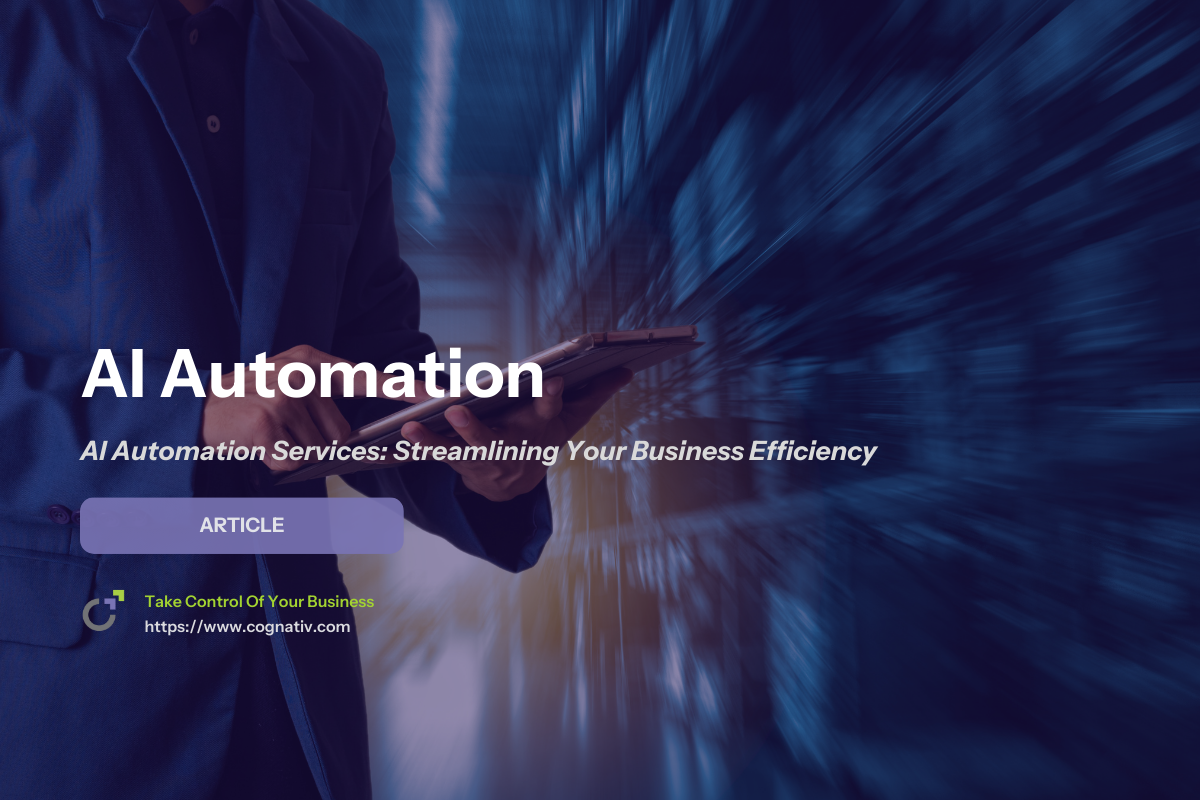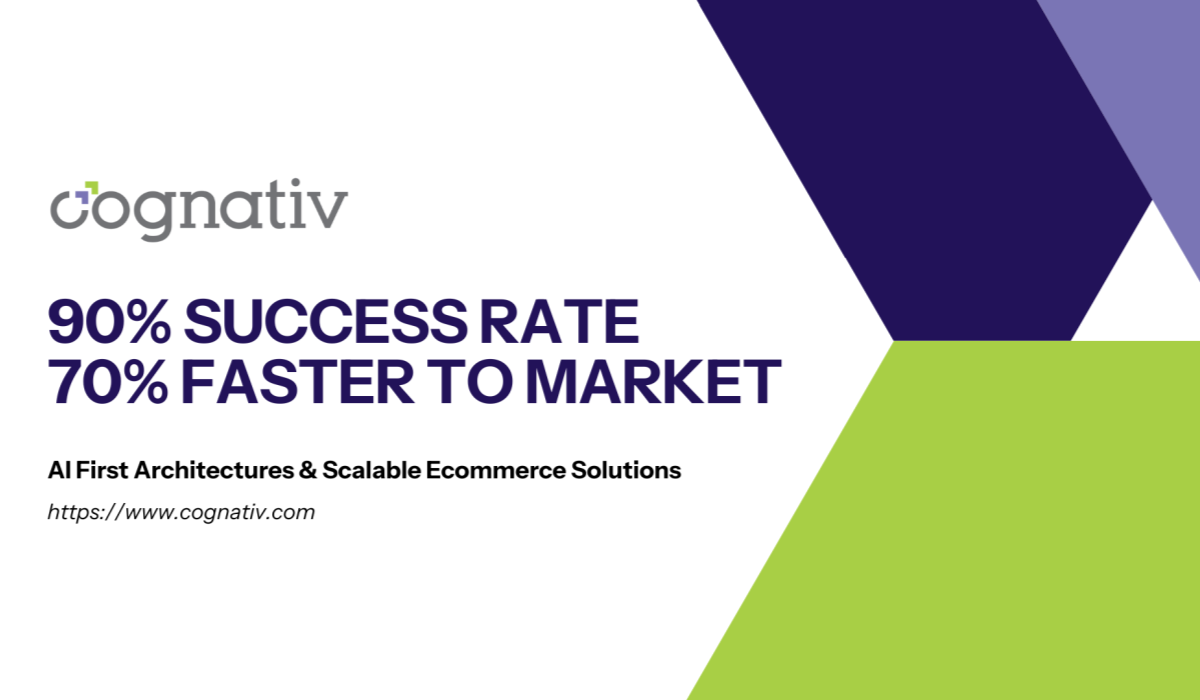AI Automation Services: Streamlining Your Business Efficiency
AI automation is the practical fusion of artificial intelligence and process automation designed to streamline operations, reduce friction, and scale value. Modern automation services bind data, rules, and models into automated workflows that remove bottlenecks from end-to-end business processes. When done well, AI automation delivers visible gains in weeks, not quarters—without forcing teams to change every tool they use.

Why AI automation now?
Cloud maturity, cheaper compute, and better machine learning have lowered the barrier to automation. Organizations are using AI automation services to streamline operations, cut the busywork of manual tasks, and re-focus teams on strategic initiatives. The result is measurable cost reduction, higher velocity, and happier customers.
From manual work to machine learning
Most companies still rely on people to move data across systems. AI automation solutions replace that glue code with ai tools and automation tools that can read, reason, and act. By pairing models with guardrails, you can automate business processes safely while respecting policies and industry regulations.

How AI automation services create value?
Value arrives through three levers: 1) fewer errors and repetitive tasks; 2) faster cycle times via process automation; and 3) better experiences through personalization. In short, AI automation increases throughput, reduces risk, and frees talent from low-value work.

Benefits of AI Automation
The payoff from ai and automation services compounds as more business processes are automated and connected.
Cost reduction & cost savings
Well-scoped automation solutions remove swivel-chair work, trim rework, and reduce escalations. You’ll see line-item cost savings from fewer tickets, lower handle time, and less paid overtime. For leadership, AI automation is a lever that improves margins without compromising quality.
Revenue lift & customer engagement
With intelligent routing and personalized outreach, AI automation can raise conversion and retention. AI powered systems draft messages, propose next best actions, and support richer customer interactions that enhance customer engagement and customer experience.
Risk mitigation & compliance
Automating checks, entitlements, and audit trails reduces exposure. Combining predictive analytics with policy engines helps flag anomalies early (think fraud detection) and prove compliance to auditors. Strong governance keeps data flows traceable even as business operations scale.

AI Automation Services (Catalog)
A clear catalog makes it easy to map outcomes to capabilities and budget.
Process automation & virtual assistants
Use AI automation services for human-in-the-loop process automation across intake, approvals, and fulfillment. Deploy virtual assistants that triage requests, extract intent with natural language processing, and hand off to humans when needed. These assistants reduce repetitive tasks and boost productivity across teams.
Document automation & data entry
Apply models to classify, extract, and validate forms—then route exceptions to queues. You can automate data entry from PDFs and invoices, minimizing errors and freeing analysts from manual work. One investment in document automation often repays itself within a quarter.
Predictive analytics & intelligent agents
Pair predictive analytics with event streams to forecast demand, capacity, or churn, then trigger actions automatically. For orchestrating multi-step tasks, use intelligent agents sparingly to maintain control, and introduce ai agents where tool-calling can be audited and approved.
Prebuilt frameworks and accelerators
An automation agency with accelerators (prompts, adapters, evaluation suites) can move from discovery to pilot quickly. These reusable templates shorten time-to-value and ensure you are constantly testing quality and reliability.

AI Integration and Development
Delivering durable automations requires design, engineering rigor, and empathy for end users.
AI powered apps development & consulting
Start with discovery, then design thin-slice pilots. Lean on ai automation agency playbooks for ai powered apps development that prove value quickly. Advisory-led automation consulting clarifies scope and reduces rework, especially in regulated environments.
Connect to existing systems & tech stack
Great automations disappear into existing systems—CRM, ERP, ITSM, data warehouses. Engineers wire adapters to your tech stack, surface outcomes in the tools people already use, and keep data where it belongs. This reduces integration risk and protects institutional knowledge.
Selecting AI tools and automation tools
For durability, choose ai tools and automation tools that support observability, versioning, and rollbacks. Prefer platforms that handle approvals, retries, and monitoring out of the box. Fit matters more than flash when the goal is reliability across business operations.
Custom scripting and custom code
Not every gap needs a heavy platform feature. Teams still write custom scripting for glue work and maintain a bit of custom code where necessary. Clear standards, code reviews, and runbooks keep these additions safe and maintainable.

Industry-Tailored Solutions
The most effective automation services reflect domain nuance—terminology, data models, and constraints.
Financial services (fraud detection & KYC)
Banks use AI automation to accelerate onboarding, verify identities, and flag anomalies. Pipelines analyze data from applications and transactions to score risk, route cases, and prefill forms. That reduces repetitive business processes while improving customer trust.
Healthcare (patient experience & care teams)
Hospitals coordinate benefits, pre-auth, and follow-ups with AI automation solutions that summarize charts and draft outreach. Teams see faster handoffs and better customer interactions, with clinicians kept in the loop for safety and empathy.
Retail & e-commerce (catalog & service)
Merchants deploy ai solutions to enrich products, personalize messages, and guide agents. AI automation cuts resolution time and scales support without bloating headcount, directly supporting business growth.
Operations & manufacturing (vision & quality)
On the floor, sensors and image recognition feed models that spot defects and trigger actions. Event-driven automation services remove delays between detection and response, improving throughput and quality.

Automation Agency (Partner Model)
A seasoned automation agency can accelerate your roadmap and reduce delivery risk.
What an automation agency does?
The right partner brings discovery workshops, a library of accelerators, and deep technical expertise in machine learning, integrations, and testing. A strong ai automation agency focuses on real outcomes—cycle time, accuracy, and user adoption—while keeping you in control of IP and data.
Evaluating Automation Services Cost
Price should map to value. Instead of endless pilots, align on a clear scope, success metrics, and a capped pilot. Discuss automation services cost once, then steer to total cost of ownership and payback windows. Ask for benchmarks that reflect your volumes and constraints.
Governance, quality & constantly testing
Expect SOC-aligned SDLC, audit-ready logs, and evaluation suites. A reliable automation agency defines guardrails for ai systems, roles for approvals, and remediation playbooks—then proves resilience by constantly testing edge cases and recovery paths.

AI and Automation (Agentic Era)
We are entering an era where AI and automation services coordinate tools to deliver intelligent automation that feels like a teammate.
Agentic process automation & more visual interface
Agentic flows plan, act, and observe—moving beyond single-step macros. A more visual interface lets operators view plans, approvals, and outcomes. That same visual interface also helps non-technical users supervise more complex workflows.
Automate business processes end-to-end
Use event triggers and approvals to automate business processes across intake, triage, and fulfillment. These patterns let teams automate repetitive tasks while keeping humans in the loop for judgment calls and exceptions.
Open AI and popular AI models
Production stacks often include Open AI for general reasoning, popular ai models for specific modalities, and other popular ai models as fallbacks. Choose vendors with clear SLAs and strong red-teaming so your automation solutions behave predictably.

AI Powered Technology
Choose technology that solves problems—not just demos well.
AI powered systems & machine learning models
Combine AI powered systems with compact machine learning models to meet latency and privacy needs. Keep humans at the center and use evaluations to prevent drift. These choices help streamline operations without sacrificing control.
Artificial intelligence chatbot developed
An artificial intelligence chatbot developed for support can pre-answer FAQs, summarize intent, and route to agents. When paired with policy-aware actions, the ai chatbot becomes a capable teammate that can boost productivity and reduce escalations.
AI chatbot vs virtual assistants
Chatbots excel at front-door triage. Virtual assistants go deeper: they call tools, update records, and close tickets. Both reduce repetitive tasks; together, they expand coverage hours and improve customer experience.

Getting Started with AI Automation
A pragmatic start prevents analysis paralysis and keeps momentum high.
Quick assessment for businesses aiming to start
For businesses aiming to pilot, pick one process with observable metrics and high volume. Define outcomes, risks, and boundaries up front. Use tailored solutions sparingly—start with reusable patterns, then extend for nuance.
30–60–90 day roadmap
-
Days 0–30: Discovery, data mapping, and a thin-slice pilot using ai automation services. Prioritize business processes with clear owners and guardrails.
-
Days 31–60: Harden the pilot; add alerts, retries, and process automation guardrails. Introduce ai agents for tool-calling where approvals exist.
-
Days 61–90: Scale to adjacent business operations, expand ai solutions, and formalize evaluations. One mention of automation capabilities belongs here—score each flow on accuracy, latency, and human effort.
Measuring ROI and automation capabilities
Track cycle time, deflection, accuracy, and employee sentiment. Continue to boost productivity by removing manual approvals where safe. Publish dashboards so leaders see progress and teams celebrate wins.

Conclusion
AI automation is a durable path to efficiency, resilience, and growth. By aligning outcomes to a clear catalog, integrating with existing systems, and partnering with the right automation agency, organizations can enhance efficiency, deliver cost savings, and build momentum. With thoughtful design, AI automation services reduce risk, increase revenue, and create space for better work.

Additional Resources
-
Work with an ai automation agency for discovery and a pilot that proves value.
-
Explore ai technology choices with your platform team; match models to constraints.
-
Review automation technologies and vendor SLAs before committing long-term.
-
Prioritize business automation patterns you can reuse across departments.

Frequently Asked Questions
Here are answers to some common questions about AI automation services to help you better understand their benefits and implementation.
What are the most common AI automation services?
Process intake, classification, approvals, and fulfillment; virtual assistants for support; and policy-aware triage that reduces repetitive tasks.
How do we choose between platforms and custom code?
Favor platforms for orchestration and observability, but keep the option for custom scripting and small modules of custom code when gaps appear.
Which models do we need?
Start with general LLMs plus domain retrievers, then add task-specific machine learning models for scoring or ranking alongside your popular ai models.
Can automation handle complex workflows safely?
Yes—with human approvals, audit logs, and controls. Good automation services emphasize governance, testing, and fallbacks so ai systems behave predictably.
How long until we see value?
Weeks, not months, if you limit scope and automate high-volume business processes first. Keep releases small and iterative, then expand.
What about pricing and ROI?
Align scope, metrics, and a capped pilot; forecast payback windows using cycle-time cuts and deflection. Track results publicly to maintain sponsorship.


